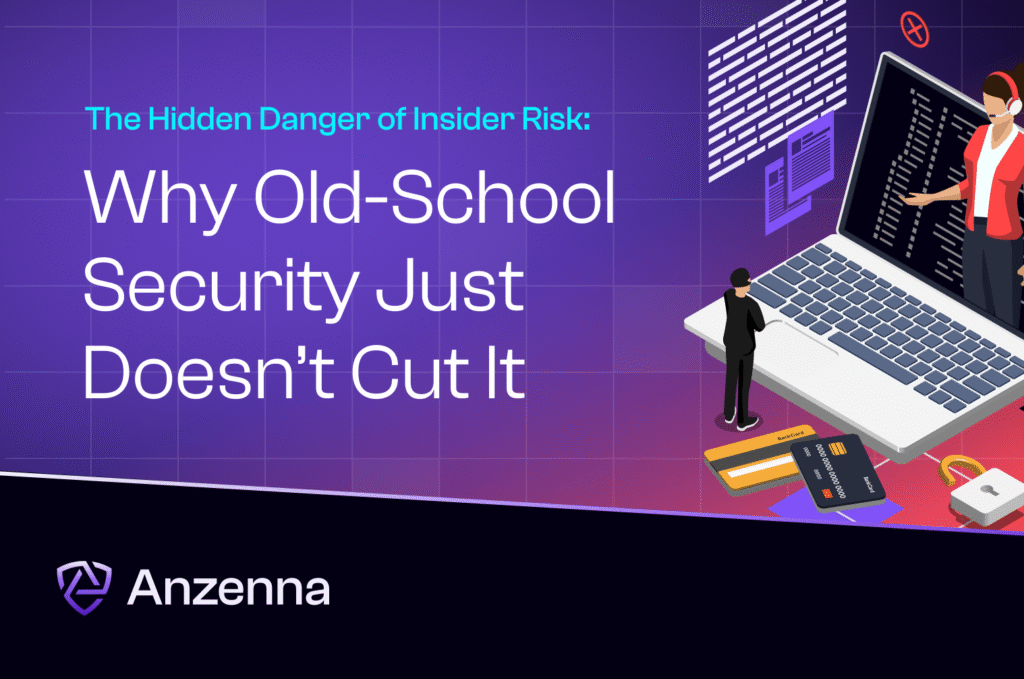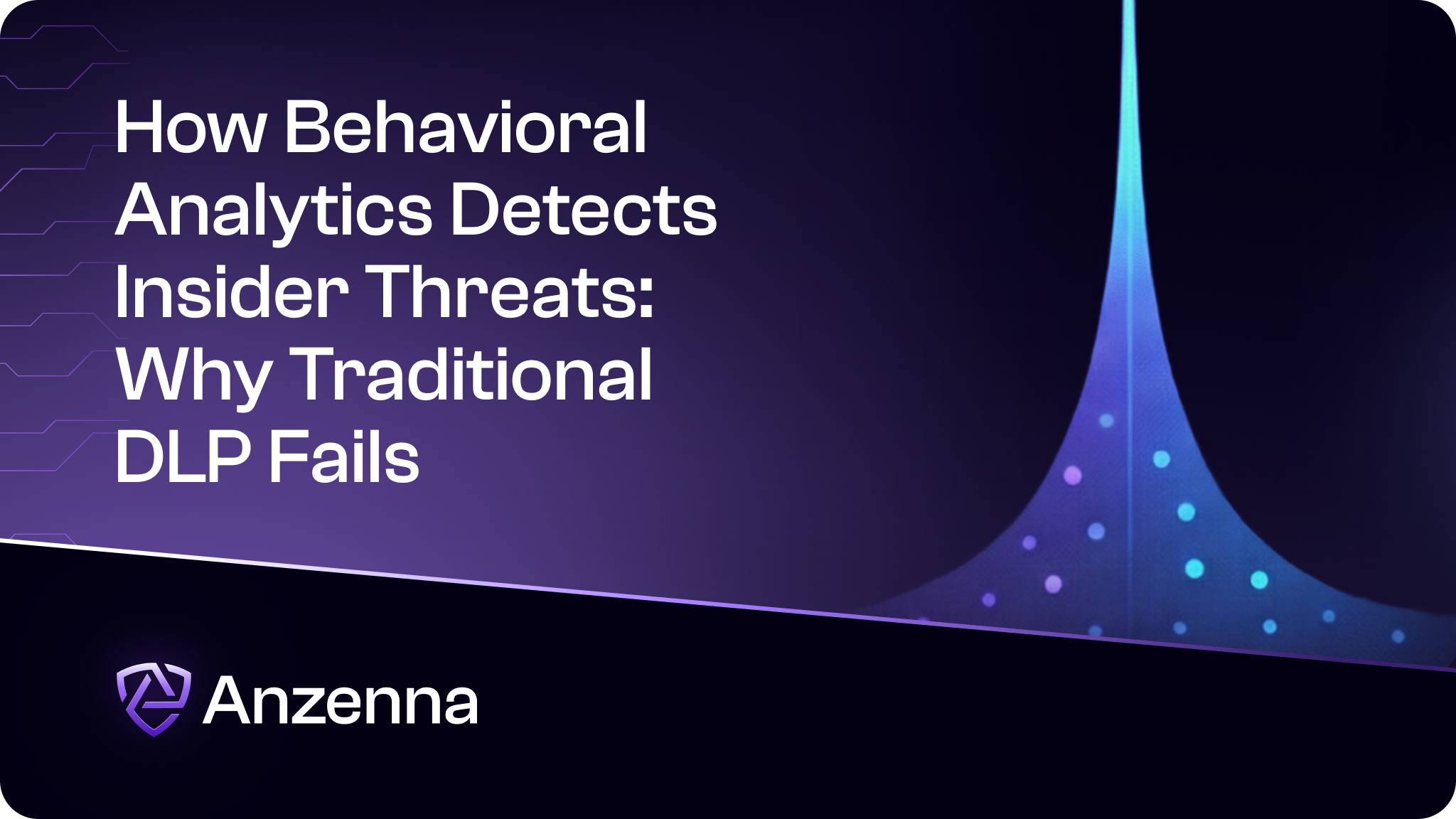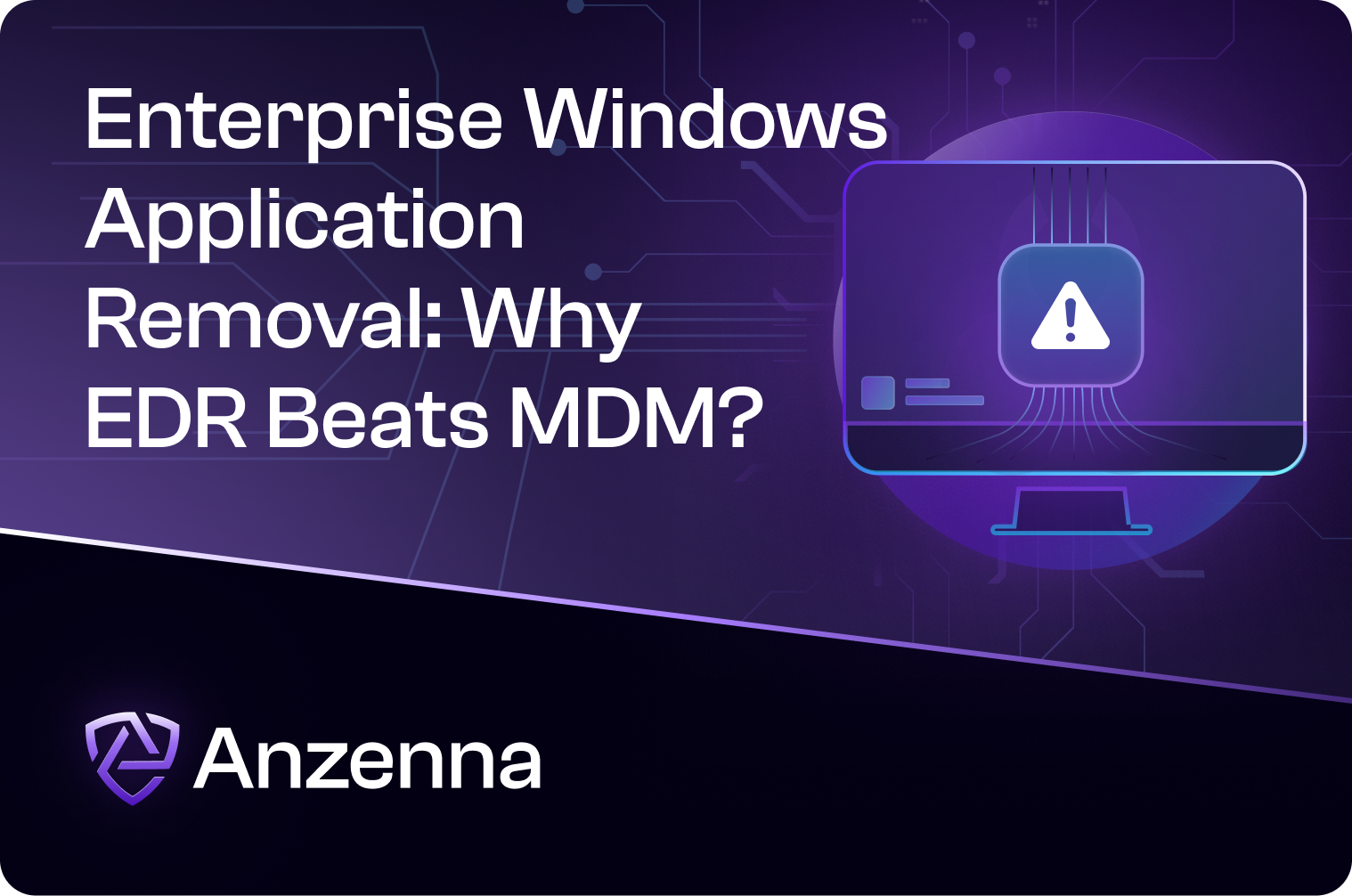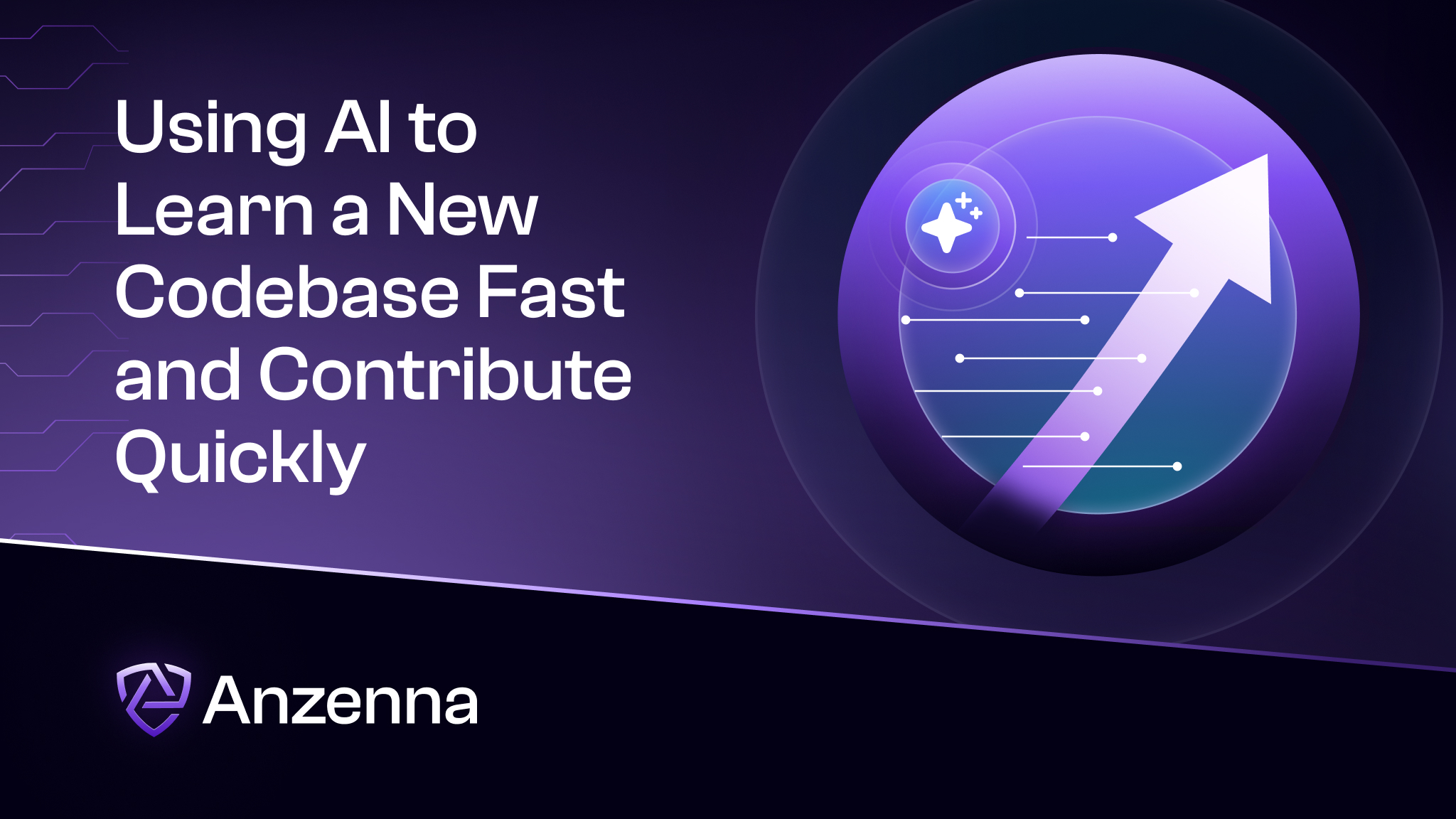Let’s be real—insider threats are one of the biggest problems in cybersecurity today. You don’t always need an outside hacker to cause chaos. Sometimes, the threat is sitting right inside your own company. In fact, about 3 out of every 4 breaches last year involved people inside companies. And those breaches? They’re not cheap. The average one tied to insider activity cost companies almost $5 million.
The real problem? Most security tools out there are stuck in the past. This includes User and Entity Behavior Analytics (UEBA), and also Security Information and Event Management (SIEM), which are two very common types of cybersecurity systems. They wait until something bad happens, then throw up a red flag. But by that time, the damage is often already done. Companies need smarter, faster ways to spot these risks before things go sideways.
Three Kinds of Insider Threats You Should Know

Not every insider threat looks the same. They usually fall into three buckets:
- The Malicious Insider
These are people who intend to harm you – whether that’s stealing files, messing with systems, or helping outsiders break in. Take the case of Coinbase, a cryptocurrency exchange company. They discovered a recent security breach impacting nearly 70,000 customers after hackers bribed customer support staff to gain access to sensitive data, and then demanded a ransom. Coinbase refused to pay the ransom but estimates the financial impact of the breach could be up to $400 million. That’s not just shady—that’s serious insider theft. - The Negligent Insider
These folks aren’t trying to do anything bad. But they end up causing problems anyway – like misconfiguring cloud storage, clicking phishing links, or forgetting basic security rules.
An example? Disney recently fired an employee who unintentionally compromised the company’s cybersecurity in a massive breach. The employee downloaded a free AI tool that they thought was legitimate but turned out to be malware. The hacked employee then had their password credentials stolen, which was used to access the company’s internal Slack – giving attackers access to over 44 million internal messages and leaving 1.1TB of sensitive company data exposed. - The Accidental Insider
This is the person who didn’t mean to click on a bad link… but did. Or who sent the wrong email to the wrong person. It happens more than you think. Recently, Google reported a wave of phishing emails targeting Chrome users. These emails had links loaded with sneaky malware that took advantage of a new (zero-day) vulnerability. Once clicked, it was game over. No evil intentions—just a split-second mistake that opened the door to hackers.
Why Traditional Security Tools Keep Missing the Mark
- They React Instead of Preventing
Most security systems are like fire alarms that go off after the house is already on fire. They rely on rigid rules and can’t spot strange behavior before something bad happens. So by the time your team gets an alert, it might already be too late. - Too Much Noise, Not Enough Action
Ever heard of alert fatigue? It’s real. Tools like SIEM and UEBA spit out tons of warnings, but most of them are in fact false positives, meaning harmless. When teams get buried under thousands of alerts, they start tuning them out – a phenomena known as ‘alert fatigue’ – and that’s when the real threats sneak by. - Can’t See the Whole Picture
Companies today run on a mix of SaaS apps, various clouds, personal devices, and more. But most older tools were built for office networks and can’t track what’s happening on tools like Google Drive or Slack. That’s a big blind spot. - No Time to Waste, But Manual Everything
When a threat is detected, every second counts. However, even when threats are spotted, old systems don’t act fast enough. They need human teams to do everything by hand—review alerts, pull logs, investigate, escalate. By the time action is taken, the damage may already be done. In fast-moving situations, delays can be dangerous.
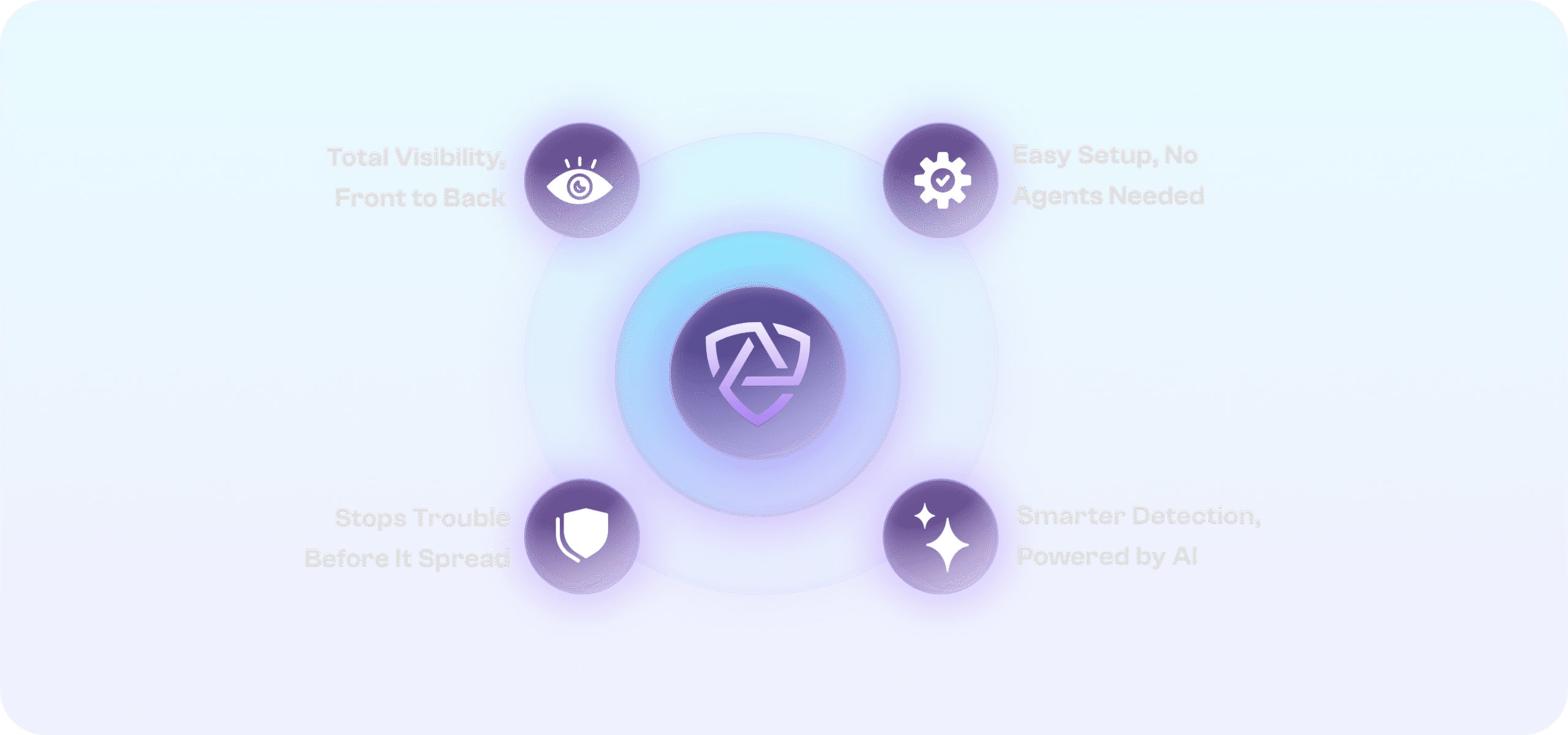
How Anzenna Handles Insider Risk the Smart Way
- Smarter Detection, Powered by AI
Anzenna uses agentic AI that looks at what people actually do across apps and devices. It finds odd behavior early—before things go wrong. Anzenna keeps your environment clear of suspicious software across desktop apps, OAuth apps, browser extensions, VSCode extensions, and developer packages. It’s like having a security guard who never sleeps and can actually think. - Easy Setup, No Agents Needed
Anzenna doesn’t need to install anything on your employees’ devices. No clunky software, no slowdowns, no complex deployment, no headaches. Just smooth protection, behind the scenes. - Stops Trouble Before It Spread
Instead of just raising a flag and waiting for someone to fix it, Anzenna jumps in automatically. It can block risky actions, stop data leaks, or flag bad behavior—all in real time. Anzenna surfaces high-fidelity risks instantly, saving your security team hundreds of hours of manual work stitching together logs from siloed systems. - Total Visibility, Front to Back
No matter if you use Google Workspace, Microsoft 365, Slack, or a mix of cloud and on-prem applications, Anzenna sees it all. That means no more blind spots, and no more guessing. Anzenna gives you deep context and cross-platform insight to prioritize security risks, all available out-of-the-box using our AI chatbot interface and reports.
Looking Ahead: The Future of Insider Risk
Companies are changing. Teams are remote, apps are in the cloud, and AI is part of the daily workflow. Old-school security can’t keep up. With Anzenna, you don’t just respond to insider threats—you prevent them. You stop problems before they start. You protect your people, your data, and your business.
Want to stay ahead of insider risk?
Let’s talk. Anzenna can help. Visit Anzenna to schedule a demo.

